Selene Rivas - November 23, 2017
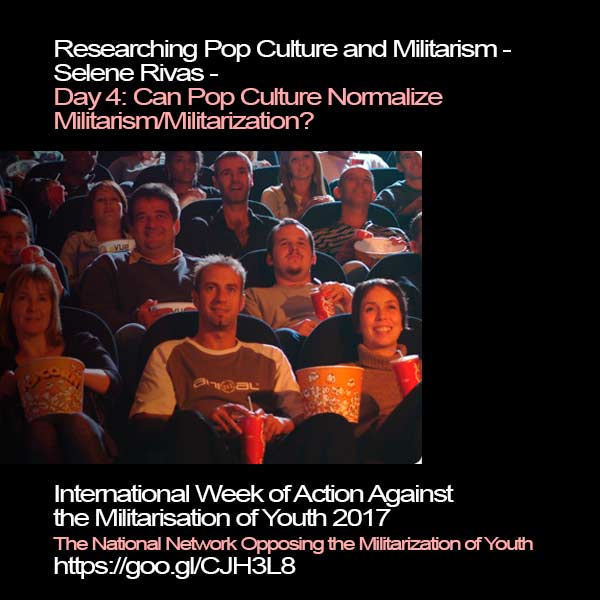 Can seemingly innocuous activities such as playing video games, watching movies, or binging on TV shows affect your ways to see the world or how you behave? Could it affect social norms? Is one able to “turn one’s brain off”, and not be affected beyond the most superficial level, by what one is consuming? Much has been written about violence in the media and how it might affect people’s behavior, and indeed, positive correlations with violence can be found1. But beyond these oft-discussed subject, the question is: what role does mass media and pop culture play in normalization? And, more related to this series of articles, what is the relationship between pop culture, militarism/militarization, and normalization? This article will attempt to approximate us to an answer..
Can seemingly innocuous activities such as playing video games, watching movies, or binging on TV shows affect your ways to see the world or how you behave? Could it affect social norms? Is one able to “turn one’s brain off”, and not be affected beyond the most superficial level, by what one is consuming? Much has been written about violence in the media and how it might affect people’s behavior, and indeed, positive correlations with violence can be found1. But beyond these oft-discussed subject, the question is: what role does mass media and pop culture play in normalization? And, more related to this series of articles, what is the relationship between pop culture, militarism/militarization, and normalization? This article will attempt to approximate us to an answer..
First, let’s start by defining the term “popular culture”. In his article titled “On Captain America and ‘Doing’ Popular Culture in the Social Sciences”, Jason Dittimer explains the difficulties he ran into when attempting to write a book exploring the relationship between Captain America and world politics:
"It seems so petty. How could Captain America be really responsible for anything, good or bad, in global politics? In truth, I agree. The problem lies in our conceptualisation of popular culture as a thing: an object that can be grasped, considered and analysed... Rather, popular culture is a doing. It is what we do, in common, with others. This liveliness is what is lost when popular culture is reduced to a thing. Captain America is not just the comics with his name on them, rather, he is the multiplicity of forms that proliferate around that signifier as people read, write, draw, talk about, think about, and generally live with Captain America in their world..."2
(emphasis added here) For the rest of the series, we will consider popular culture as not only the films, video games, and other objects created for widespread consumption and enjoyment, but as the re-significations and appropriation people have given these objects, as well as the spaces of discussion and creation which they facilitate. These objects become symbols in the same way words are, abstractions that people, through their continued use of them, ultimately give one or many meanings and connotations to.
So, is there any causal link between pop culture and normalization? Recent MacArthur Grant winner, psychologist Betsy Levy Paluck states that “mass media and popular culture “ can change and set social norms at times, as can government policies.3 She conducted a study on 2009, trying to measure the effects a radio soap opera would have in Rwandan society. It was in 1994 Rwanda where a massacre against the Tutsi ethnic group was carried out by the ruling Hutu majority. As Paluck describes in her study, the media had a major, unquestionable role in the massacre:
"The case for the radio's culpability in Rwanda's 1994 genocide is well documented... RTLM was launched in 1993 as a talk radio station and progressively worked in anti-Tutsi jokes and commentary until it was considered an arm of the extremist Hutu government. In a landmark case, the International Criminal Tribunal for Rwanda convicted the radio station's founders for crimes of genocide, arguing that radio 'set the state' for genocide."4
The soap opera was specifically written by “La Benevolencija, which 10 years after the genocide produced a yearlong ‘education entertainment’ radio soap opera designed to promote reconciliation in Rwanda”5 The conclusions she reached after her study were that, rather than change their beliefs, Rwandans who listened to the show changed their perception of social norms, which in turn affected their behavior. As she explains:
....in some instances, reconciliation listeners endorsed norms in opposition to their stated beliefs—for example, they rejected proscriptions for intergroup marriage even though they believed that marriage between groups often causes tension. These results also support the pessimistic view that beliefs are difficult to change (Bem, 1970; W. G. McGuire, 1986; Wood, 2000) and that media do not effectively tell people what to think but instead communicate social norms, or what other people think (Kinder, 1998; Mutz, 1998)6
She addresses the concerns at how valid these conclusions would be for Western societies in her conclusion, saying that “there is nothing uniquely Rwandan about the pattern of social norm perception and norm consistent behavior they reveal.”7, and that Western media, despite having a wide variety of outlets and forms, “do not necessarily represent a diversity of informational and normative influence” 8.
Although there have been woefully few academic field studies done on the media’s influence on the public, this does not mean that many haven’t been laboring under that assumption already; in an interview published in the NPR website, Paluck is asked whether her work could be used for “evil purposes”. She replies: “They're already doing that. There's negative media, there's propaganda. There are people advocating for really negative causes.”9
And that brings us to the intersection of popular culture and militarism/militarization: on one hand, it can reflect militaristic thought in a society, and on the other, it can be a tool for its militarization. Often, these two can go hand in hand.
Although the term “propaganda” largely has negative connotations, it’s still in the toolbox of many governments. The United States government and the deep pockets of its armed forces play a large role in the film industry past and present; in turn, the film industry has played a large role in what armed conflict and the parts which make it up look like and signifies to a wide audience. For instance, General MacArthur commends John Wayne “...before the American Legion Convention by affirming ‘You represent the American serviceman better than the American serviceman himself’”10 for his role in the film, Sands of Iwo Jima.
Even unintentionally, the way a message or idea is presented can undercut or directly contradict the creator’s intentions. While many filmmakers claim their movies are anti-war, they end up glorifying or admiring it in their visual language. A video that explores this claim can be found here:
https://www.youtube.com/watch?v=3ChlJ1pdWlQ
The relationship between Hollywood and the military, as well as the question as to what could be considered an anti-war movie, will be discussed in the following article.
Aside from this, additional and unintended messages can crop up when considering the implications of any one scene. And, most importantly, all messages result from a series of assumptions about the world, concious or unconcious, on the part of the creator(s). It is in that sense that we say all creations and actions are political, whether that was the creator or perpetrator’s original purpose. In this regard, video games are particularly fascinating, because these assumptions manifest not only in the explicit narrative and its implicit meaning, and not only, as in film, in the visual language weaved into it, but also in the mechanics which make it possible for players to interact with the world. The interactions made available by the developers of these games are, on one hand, built upon the limitations of gaming systems, and on the other, reflections of their own embedded and unconscious assumptions about the world. These ideas will be explored with more depth on an upcoming article, but the following are some recommended videos which explore the last point made regarding game mechanics:
https://www.youtube.com/watch?v=xBlEscMLjy0
https://www.youtube.com/watch?v=7_tdztHiyiE
To conclude, pop culture is an effective normalization device: not only does it serve to inform people about social norms (what other people’s attitudes towards certain topics is), but, as a space where, through their interactions, people reinforce these conceptions and construct upon and around them. We can look at militarism in popular culture as a reflection of a society, and militarization as the utilization of it as a tool to advance certain individuals and group’s interests. We’ll be looking at these when we analyze Hollywood movies, video games, in the future installments of this series.
References:
1 Anderson, Craig A., and Brad J. Bushman. “The Effects of Media Violence on Society.” Science, American Association for the Advancement of Science, 29 Mar. 2002, science.sciencemag.org/content/295/5564/2377.
2 Dittimer, Jason. “On Captain America and ‘Doing’ Popular Culture in the Social Sciences.” Popular Culture and World Politics: Theories, Methods, Pedagogies, 2015, www.e-ir.info/wp-content/uploads/2015/04/Pop-Culture-and-World-Politics-E-IR.pdf.
3, 9 Singh, Maanvi. “'Genius Grant' Winner Used A Soap Opera To Prove A Point About Prejudice.” NPR, NPR, 11 Oct. 2017, www.npr.org/sections/goatsandsoda/2017/10/11/556869077/genius-grant-winner-used-a-soap-opera-to-prove-a-point-about-prejudice.
4, 5, 6, 7, 8 Paluck, E L. “Reducing Intergroup Prejudice and Conflict Using the Media: a Field Experiment in Rwanda.” Journal of Personality and Social Psychology., U.S. National Library of Medicine, Mar. 2009, www.ncbi.nlm.nih.gov/pubmed/19254104.
10 Newman, Simon. “‘Is That You John Wayne? Is This Me?’ .” American Studies Today Article, Liverpool John Moores, 2006, www.americansc.org.uk/Online/Newman.htm.
Series Homepage at http://nnomy.org/index.php/en/resources/blog/researching-militarism-selene-rivas
Selene Rivas is an anthropology student at the Central University of Venezuela and an intern for the National Network Opposing the Militarization of Youth. Contact her at This email address is being protected from spambots. You need JavaScript enabled to view it.
###



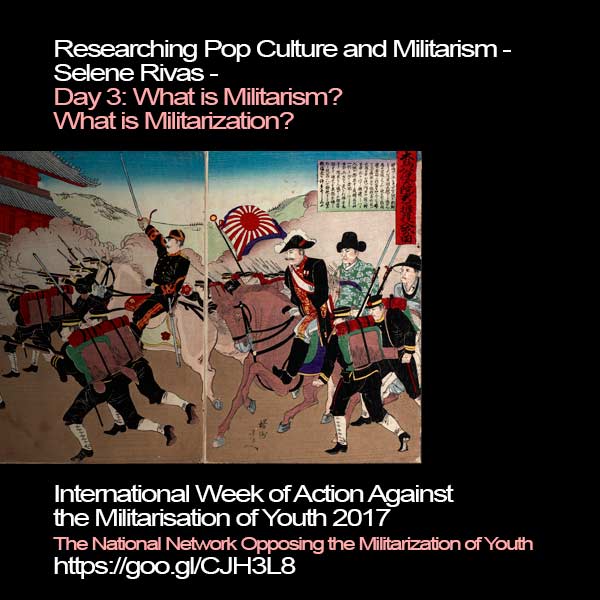 In the previous articles, we talked about how normal is defined differently in both space and time; just as Japan and Argentina might have two different ideas of what constitutes as “normal”, so does 18th century and 21st century United States. We also talked about normalization, or how things become more (or less) socially accepted over time. Finally, we introduced the concept of “militarism”. In this article, we’ll attempt to define it as concisely as possible, as well as give examples of militarism in Japan.
In the previous articles, we talked about how normal is defined differently in both space and time; just as Japan and Argentina might have two different ideas of what constitutes as “normal”, so does 18th century and 21st century United States. We also talked about normalization, or how things become more (or less) socially accepted over time. Finally, we introduced the concept of “militarism”. In this article, we’ll attempt to define it as concisely as possible, as well as give examples of militarism in Japan.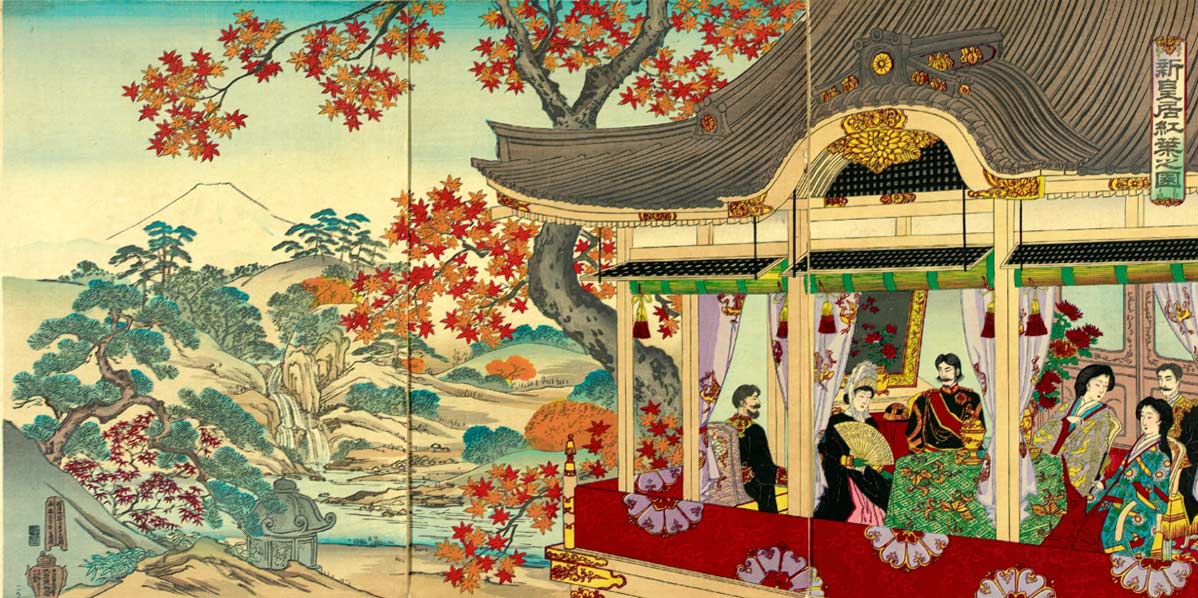
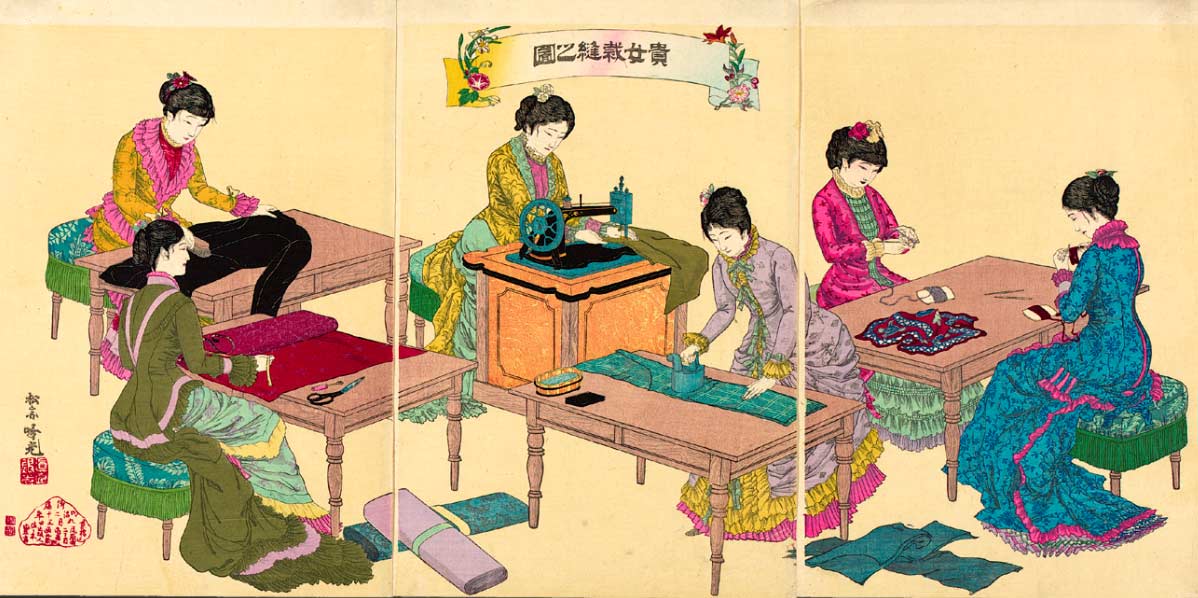
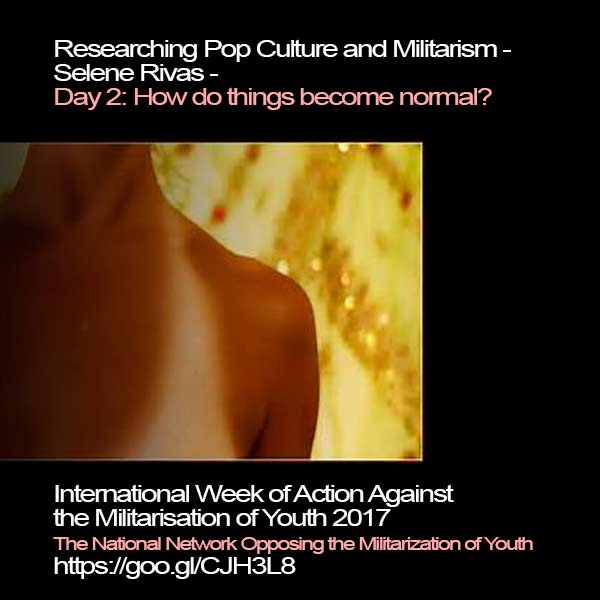 Last article, we tried to answer the question of “what is normal?” and after a few examples, eventually settled on “normal is what a group of people are used to.” In this article, we’ll look at an example of the ‘normalization’ process, that is, getting used to something to the point where alternatives are forgotten. We’ll conclude by introducing the main topic of this series: how the presence of the United States military in a surprising amount of aspects of American culture has become so normal that it is no longer noticed or questioned.
Last article, we tried to answer the question of “what is normal?” and after a few examples, eventually settled on “normal is what a group of people are used to.” In this article, we’ll look at an example of the ‘normalization’ process, that is, getting used to something to the point where alternatives are forgotten. We’ll conclude by introducing the main topic of this series: how the presence of the United States military in a surprising amount of aspects of American culture has become so normal that it is no longer noticed or questioned. 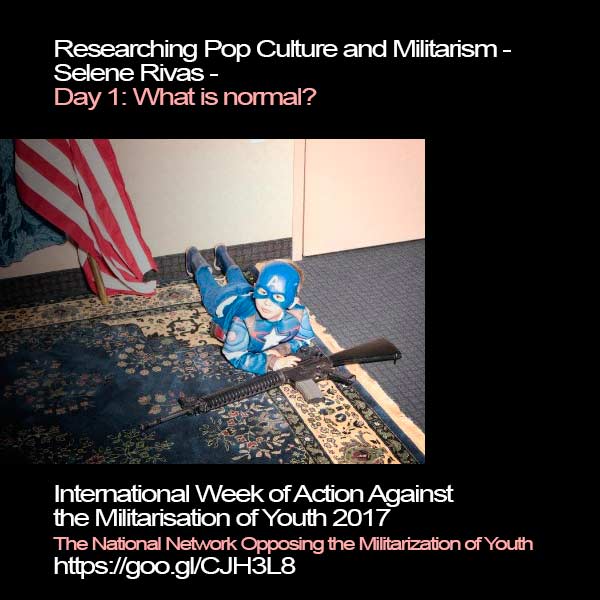 "
"




